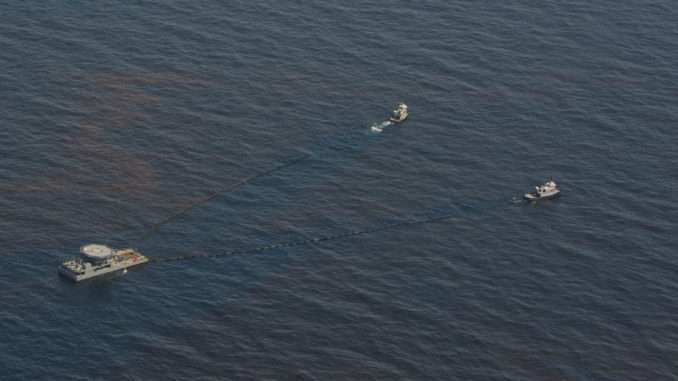
The Louisiana state fish is something special.
Louisiana coastal residents should brace for a “major impact” when oil from the Transocean spill first reaches the Bayou State coast sometime on Friday.
That’s the word from John Lopez, director of the Coastal Sustainability Program for the Lake Pontchartrain Basin Foundation.
“The outer marsh of the Chandeleur Sound as well as the Chandeleur Islands themselves will see a major impact,” he said.
Lopez based his projection on weather forecasts that call for strong southeast winds to develop over the next several days. Those winds will push much of the oil leaking from the sunken well directly into the Louisiana coast.
“The best-case scenario, they’ll recover 30 percent of the product, and then some of it will evaporate,” Lopez said. “But there’s still going to be a good volume of oil headed toward the coast.”
Exactly how much will depend upon how long it takes workers to stop the flow of oil. The current NOAA estimate is that 5,000 barrels are leaking into the Gulf every day.
To put that into perspective, there was a spill in Breton Sound in 2005 that made headlines because it impacted a pelican rookery in the area. The total amount of that spill was 15 barrels.
The delicate nature of Louisiana’s marsh makes it particularly vulnerable to impact from oil spills, Lopez said. When the Exxon Valdez ran aground in 1989, much of the oil it spilled into Prince William Sound encountered rocky shorelines that weren’t permanently harmed by the hydrocarbons.
“It’s a different story with vegetation,” Lopez said. “When vegetation gets coated with oil, it kills the living vegetation, but there’s also a delayed mortality. If the oil saturates into the ground, it inhibits regrowth.”
Exposed mud banks then get washed away by wave action, Lopez said.
Cypress Cove Marina’s Renee Cross agreed that, despite the fact that there has been less oil spilled than during the Exxon Valdez incident, Louisiana’s broken marsh presents much greater challenges.
“In Valdez, you had a rock shoreline,” Cross said. “You pressure wash that. We’re not dealing with rock shoreline.
“If that stuff gets in the marsh, it’s going down in that stuff – and you can’t pressure wash that.”
Exactly how much of Louisiana’s coast will be impacted is impossible to tell, Lopez said, because much will be determined by wind directions over the next several weeks, as well as how long it takes workers to plug the leaks.
Current estimates are that it may take 90 days to permanently seal off the well. At that rate, nearly half a million barrels of oil will seep into the Gulf.
The Exxon Valdez spilled 250,000 barrels into Prince William Sound.
If those estimates are even close to being correct, Cross said he has serious concerns about the long-term impact on industry his marina serves.
“I just finished driving the last piling on D dock yesterday,” Cross said. “This oil spill will not destroy my marina. But if I can’t utilize it for what it’s built for, what use is it?”
However, he said there currently isn’t any reason for anglers to stay home.
“Today we can go fishing,” Cross said. “I just don’t think it’s something that’s going to shut us down over the next few days.”
However, he cautioned anglers to very careful where they run offshore and, as the sheen moves inshore, in the marshes of Southeast Louisiana.
“Yeah, you can run through (the oil sheen), but if you’ve got a water-cooled engine that oil runs through your engine,” Cross pointed out. “If you get enough of that oil into the motor, it’s going to clog everything up.”
Editor’s Note: Andy Crawford contributed to this story.


